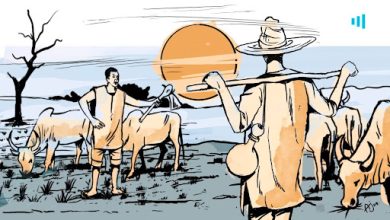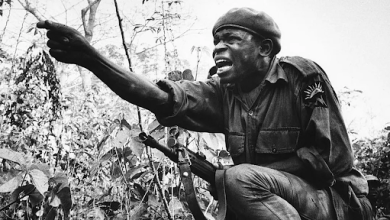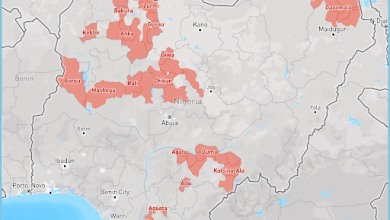Rainy Season Brings Relief, New Risks In Northeast Nigeria
The wet season in Northeast Nigeria is associated with mixed humanitarian and security implications. Better planning could, however, mitigate the risks and create opportunities.
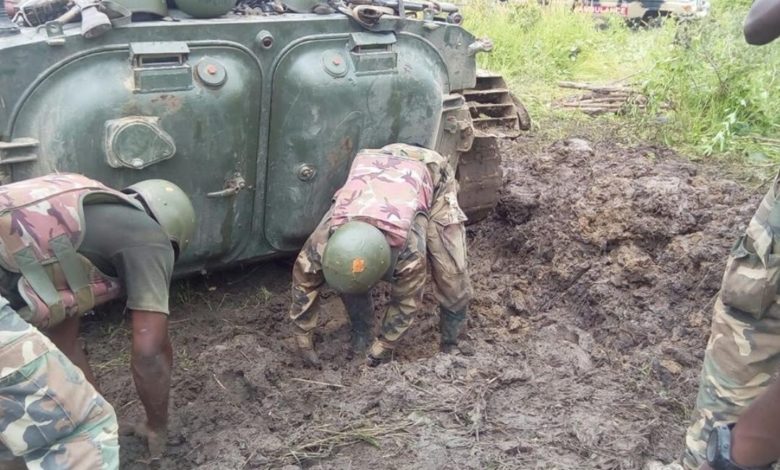
Rann, a plain town in the extreme Northeast of Nigeria frequently targeted by the Islamic State’s West Africa Province (ISWAP), morphs into an island during the rainy season, and while this brings respite from attacks, it also worsens the humanitarian situation.
The season is characterised by dramatic changes in the physical and human geography of the region, the interaction between the two features and the influence on the livelihood of the local population, their living conditions, as well as the activities of state and non-state actors.
Rainfall worsens challenges faced in military camps such as the condition of troops’ accommodation and logistics support. It also turns the soil soft and marshy, and recharges wetlands and seasonal water bodies, making them obstacles that often halt operations by preventing access to some locations and hindering the mobility of ground forces and heavy military vehicles.
“The rainy season is a difficult moment for us. We cannot dominate the environment like what we did during the dry season, but the effort is geared towards regaining our area,” said the former Minister of Defence, Mansur Dan-Ali, in July 2017.
During this period, medium and light utility helicopters usually armed with diverse types of weapon systems could be deployed for resupply runs either independently or alongside sister aircraft like the gunships. However, air sorties are prone to disruption by the adverse effects of weather.
HumAngle, in an April 2020 report, revealed that bombs from combat aircraft, an important part of the military campaign, are ineffective in the rainy season because of the absence of hard surfaces for maximum impact, allowing insurgents to harvest the unexploded bombs as materials to make improvised explosive devices.
The soft terrain is neither friendly to foe nor friendly forces, and the dynamics of wet environments such as low traction of motorable dirt roads and difficulty in moving through footpaths slows down the offensive activities of terror groups. This is evident with trends over the years and the current drop in scale and rate of attacks, especially in Borno State, the epicentre of the 12-year-old insurgency and terrorism campaign.
“Intense downpours, floods and overgrown grasses affect the movements of everyone; only the locals have a way to navigate their way around,” said a source in the 2020 report.
Skirmishes still occur and there are ambushes by squads of insurgents hiding in partially destroyed or deserted buildings and amid green savannah vegetation close to access roads or in the vicinity of military contingents.
On Aug. 11, 2021 ISWAP released the video of an ambush on a Nigerian Military Convoy in July. The team, moving in armoured and soft-skin vehicles through a road that cuts through Kareto town connecting Damasak and Gubio towns, were ambushed by ISWAP militants taking cover using buildings and vegetation.
HumAngle understands that the season provides an opportunity for farming activities and food supplies in areas where insurgents wield influence, particularly wetlands of the Lake Chad and hinterland areas.
A similar situation is experienced in state-controlled areas, with civilians having an opportunity to cultivate farmlands in areas away from marshy lands that allow for dry season farming but are often associated with security risks.
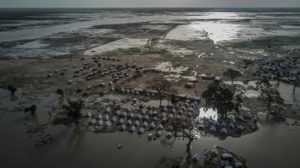
In Rann, which is the biggest settlement in the Kala Balge Local Government Area, close to Lake Chad basin, the rainy season is accompanied by flooding. Access to the town becomes almost impossible for months when the roads disappear underwater.
The United Nations Office for the Coordination of Humanitarian Affairs (OCHA) disclosed in a 2017 report that humanitarian logistics organisations had explored options to move cargo to Rann, including pre-positioning stock, using various air options with United Nations Humanitarian Air Service (UNHAS), operating cross-border from Cameroon, using donkeys and boats, repairing roads etc.
The report stated that, thus far, UNHAS had only been successful in flying in supplies, such as medicine, in smaller quantities.
Humanitarian conditions in other locations are also affected by the season, with shelters getting destroyed or flooded, including the risk of disease outbreak.
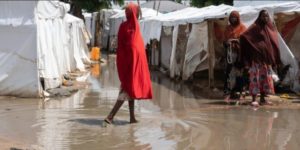
According to the IOM Displacement Tracking Matrix (DTM) report of Aug. 6, varying degrees of damage have been reported in camps and camp-like settings in Maiduguri, following heavy windstorms and rainfall.
“Heavy rainfalls, accompanied by strong winds have caused serious damages to IDP shelters and camp infrastructures,” the IOM noted.
An earlier assessment in June 2021 of 10 camps, nine collective settlements, two host community locations, and one transitional centre in Jere, Maiduguri, and Konduga local government areas discovered that 1,618 residential structures were damaged by storms, leaving 1,518 households without shelter.
Although the rainy season impacts the physical environment and poses a significant challenge to counter-insurgency forces, the government and military need to turn the tide and annual trend by utilising the obstacles to the advantage of security forces.
Improving the quality of bases in high-risk areas and the provision of specialised military equipment built for wetlands and mashy environments such as amphibious and All-Terrain-Vehicle alongside trained personnel with the requisite kits to support operations during the wet season are essential.
There is additionally the need to exploit up-to-date geospatial intelligence gathered from airborne platforms, including satellites and aeroplanes, for the development of maps available on mobile devices for commanders at different levels to facilitate operational planning and navigating in the field.
The availability of local knowledge from the civilian support militia known as the Civilian Joint Task Force (CJTF) is equally advantageous. It could provide extra leverage to better negotiate through the obstacles and turn them into offensive activities instead of setting up defensive posture during the rainy season.
Humanitarian actors would also benefit from improved investment in mitigation and resilience measures alongside weather and mapping services for early warning and disaster preparedness in camps.
Support Our Journalism
There are millions of ordinary people affected by conflict in Africa whose stories are missing in the mainstream media. HumAngle is determined to tell those challenging and under-reported stories, hoping that the people impacted by these conflicts will find the safety and security they deserve.
To ensure that we continue to provide public service coverage, we have a small favour to ask you. We want you to be part of our journalistic endeavour by contributing a token to us.
Your donation will further promote a robust, free, and independent media.
Donate HereStay Closer To The Stories That Matter

